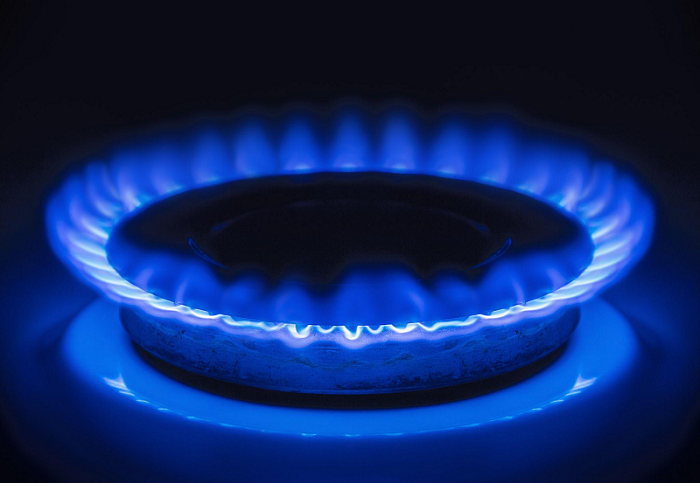
When discussing the ideal combustion process for gas appliances, such as those used for heating or cooking, the colour of the flame is a critical indicator of efficiency and safety. A blue flame is universally recognised as the gold standard in this context, and there are several compelling reasons behind this standard.
In this article, we’ll delve into the chemistry behind flame colour, the implications of different flame colours, and why a blue flame is not only desirable but necessary for optimal appliance performance and safety. By understanding these principles, users can ensure their gas appliances operate efficiently, safely, and economically. However, it helps to consult an LPG gas suppliers Brisbane for expert advice and recommendations.
Understanding Flame Color
The colour of a flame is primarily determined by two factors: the chemical composition of the fuel being burned and the completeness of the combustion process. In the case of gas appliances, the fuel is typically natural gas (mainly methane) or liquefied petroleum gas (LPG), which consists of propane, butane, or a mixture of the two. When these gases combust completely, they react with oxygen in the air to produce carbon dioxide and water vapour, releasing energy in the form of heat and light. This complete combustion process produces a blue flame.
Incomplete combustion occurs when there is insufficient oxygen available for the fuel to react fully. This results in the production of carbon monoxide, soot (carbon particles), and other potentially hazardous by-products. A yellow or orange flame indicates incomplete combustion and is less efficient, as not all the fuel is converted into useful heat.
Why Blue Flames Are Preferred
Complete Combustion and Efficiency
A blue flame indicates that the gas is burning completely. Complete combustion ensures that the maximum amount of energy in the fuel is converted into usable heat, making the appliance more efficient. This efficiency not only saves energy but also reduces the consumption of fuel, leading to lower operational costs over time.
Safety
Safety is another critical reason for preferring a blue flame. A blue flame indicates that the combustion process is complete, significantly reducing the risk of producing harmful by-products like carbon monoxide (CO). CO is a colourless, odourless gas that can cause health issues or even be fatal in high concentrations. Thus, a blue flame serves as a reassurance that the appliance is operating safely.
Environmental Impact
Complete combustion, as indicated by a blue flame, also has a lesser environmental impact. Since more of the fuel is converted into carbon dioxide (CO2) and water vapour and less into carbon monoxide and other hydrocarbons, it results in fewer emissions of these harmful pollutants. Although CO2 is a greenhouse gas, its impact is less harmful compared to the effects of releasing unburned hydrocarbons or carbon monoxide into the atmosphere.
Visual Appeal
Apart from the practical reasons for preferring a blue flame, it also has an aesthetically pleasing appearance. The bright blue flame is visually appealing and adds to the ambience of any room, making it a popular choice for gas fireplaces or stoves.
Regulatory Requirements
In some countries and regions, there are regulatory requirements for gas appliances to have a blue flame. This is to ensure that the combustion process is complete and efficient, meeting safety and environmental standards.
What Causes Flame Color to Change
Several factors can cause the flame colour to shift away from blue, signalling a problem:
- Air Supply:Insufficient air supply to the burner can lead to incomplete combustion.
- Gas Composition:Variations in the chemical composition of the gas supply can affect combustion.
- Burner Condition:Dirt, debris, or corrosion in the burner can impede the mixing of gas and air, affecting the flame colour.
- Appliance Ventilation:Poor ventilation can restrict the amount of available oxygen, leading to incomplete combustion.
What to Do If the Flame Isn’t Blue
If you notice that the flame from your gas appliance is yellow, orange, or any colour other than blue, it’s crucial to address the issue promptly:
- Check for Obstructions:Ensure the burner and appliance are clean and free from debris.
- Adjust the Air Intake:Some appliances allow you to adjust the air intake to ensure optimal mixing of gas and air.
- Inspect for Damage:Look for signs of wear, damage, or corrosion in the appliance and its components.
- Seek Professional Help:If you cannot resolve the issue or if the appliance continues to burn with a non-blue flame, it’s essential to consult a professional. Continuing to use an appliance that is not combusting properly can be dangerous.
Conclusion
The significance of a blue flame in gas appliances cannot be overstated. It symbolises the ideal state of complete combustion, ensuring efficiency, safety, and a lesser environmental impact. By understanding the factors that influence gas flame colour and taking corrective action, when necessary, users can ensure their gas appliances operate at peak performance.
Remember, if your gas flame isn’t burning blue, it’s a clear signal that your appliance needs attention. Whether it’s a simple adjustment or requires professional intervention, addressing the issue promptly will ensure your appliance operates safely and efficiently. To ensure a safe bottle gas supply, contact Plus Gas in Brisbane.





